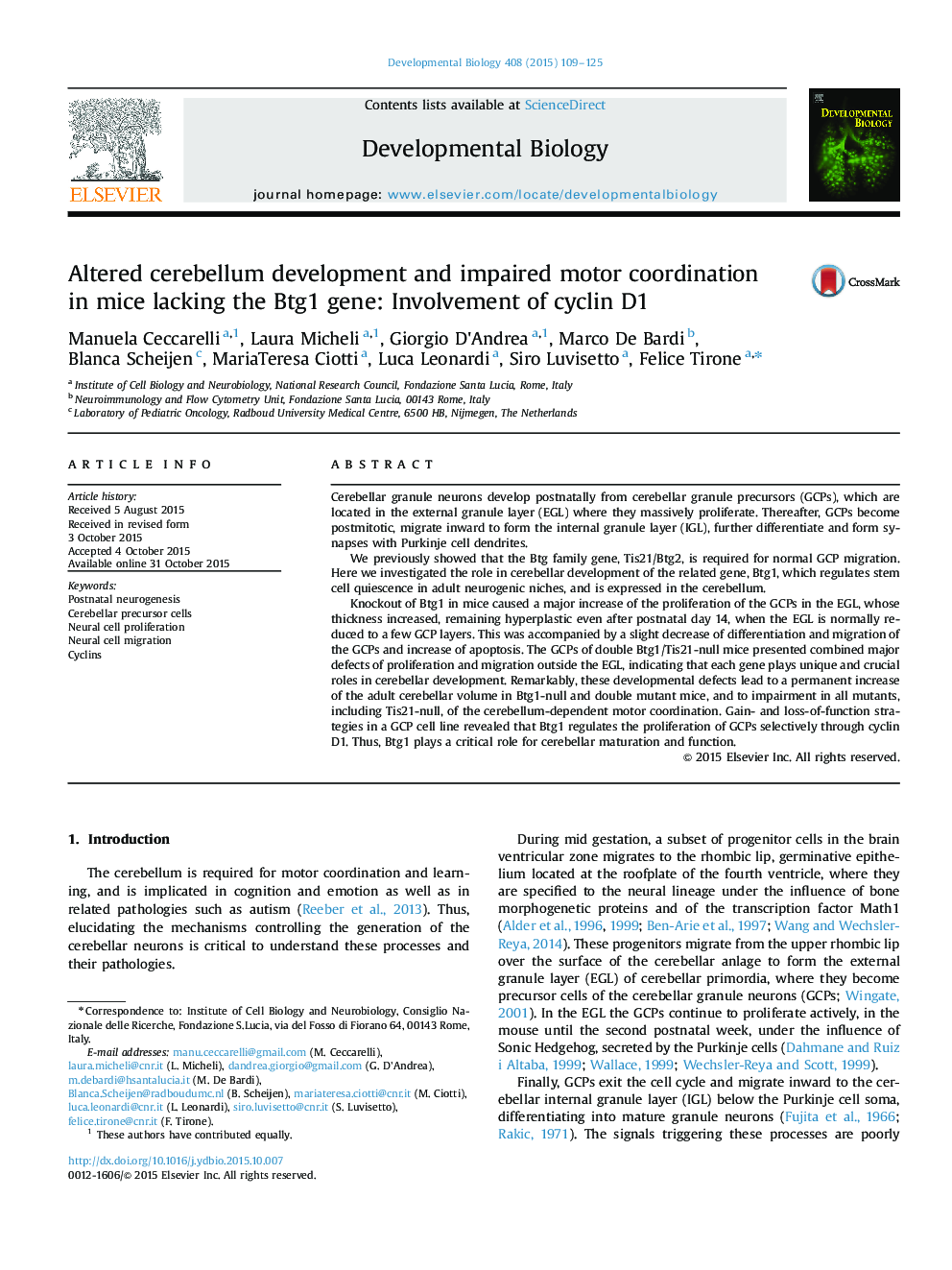| Article ID | Journal | Published Year | Pages | File Type |
|---|---|---|---|---|
| 10931291 | Developmental Biology | 2015 | 17 Pages |
Abstract
Knockout of Btg1 in mice caused a major increase of the proliferation of the GCPs in the EGL, whose thickness increased, remaining hyperplastic even after postnatal day 14, when the EGL is normally reduced to a few GCP layers. This was accompanied by a slight decrease of differentiation and migration of the GCPs and increase of apoptosis. The GCPs of double Btg1/Tis21-null mice presented combined major defects of proliferation and migration outside the EGL, indicating that each gene plays unique and crucial roles in cerebellar development. Remarkably, these developmental defects lead to a permanent increase of the adult cerebellar volume in Btg1-null and double mutant mice, and to impairment in all mutants, including Tis21-null, of the cerebellum-dependent motor coordination. Gain- and loss-of-function strategies in a GCP cell line revealed that Btg1 regulates the proliferation of GCPs selectively through cyclin D1. Thus, Btg1 plays a critical role for cerebellar maturation and function.
Keywords
Related Topics
Life Sciences
Biochemistry, Genetics and Molecular Biology
Cell Biology
Authors
Manuela Ceccarelli, Laura Micheli, Giorgio D'Andrea, Marco De Bardi, Blanca Scheijen, MariaTeresa Ciotti, Luca Leonardi, Siro Luvisetto, Felice Tirone,
